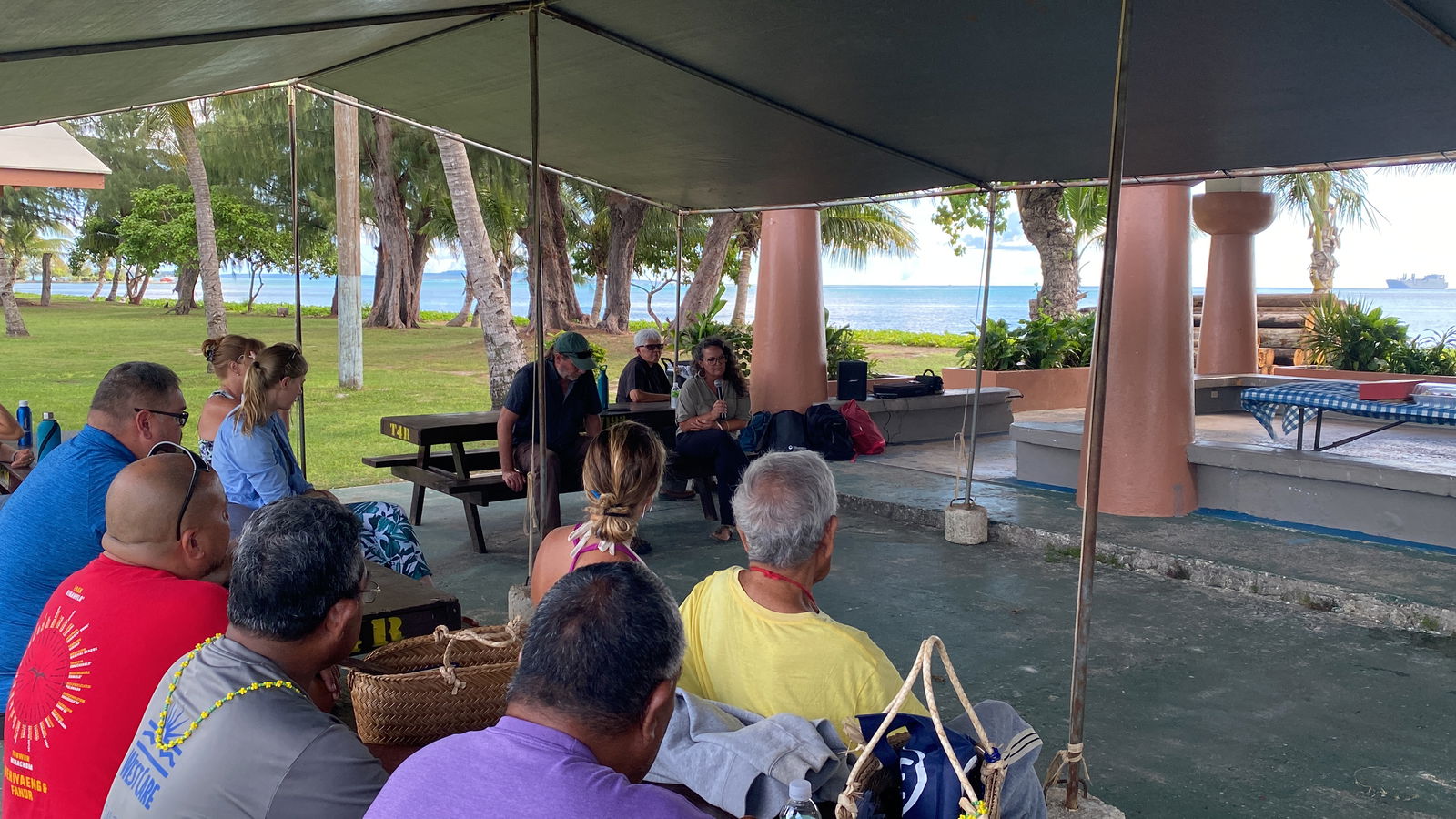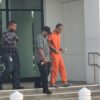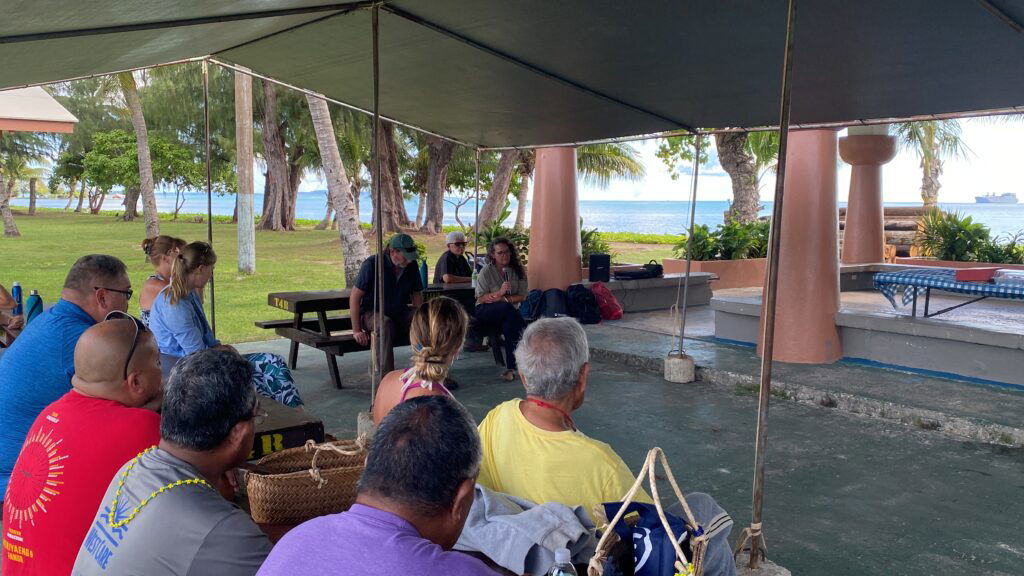
Jennifer McKinnon, holding a microphone, speaks at a meeting with community members at the Carolinian Utt on Tuesday, Aug. 13, 2024.
REPRESENTATIVES of East Carolina University and the Bureau of Ocean Energy Management met with some members of the community at the Carolinian Utt on Tuesday to announce that they will conduct cultural research to establish a “best practices guidance” document and an inventory of Marianas’ maritime heritage sites.
Present at the meeting were Dr. Jennifer McKinnon, a history professor at ECU, Dave Ball, a coordinator and Pacific Region Tribal liaison for BOEM, and several local residents.
BOEM is under the U.S. Department of the Interior. Its mission is to manage the development of U.S. Outer Continental Shelf or OCS energy, mineral and geological resources “in an environmentally and economically responsible way,” according to its website.
BOEM was given jurisdiction of the OCS of U.S. territories in 2022.
McKinnon said although there are currently no plans to develop offshore energy in the waters around the Marianas, ECU and BOEM want to develop ways to partner with the community.
“The reason I took on this project is because, in the 18 years or so that I have been coming here, I have watched federal process after federal process happen out here without the engagement process, without creating connections, without listening to the community,” McKinnon said. “This is a research study…that starts with engaging with the community and building relationships before [any energy projects] could even potentially come down the line.”
She said over the next four years, BOEM and ECU will meet with stakeholders on island to create a “best practices guidance” document, in order to understand how island residents want federal representatives to engage with them. She said the team will also create an inventory of Marianas maritime heritage sites. These can include physical sites like submerged airplanes and shipwrecks and/or sea lanes and traditional fishing grounds.
“I’m not saying we want you to share your sacred and traditional knowledge because that’s not what we want,” McKinnon said. “What we’re interested in is understanding the types of heritage so if…there was a project and it went offshore [we would know]…that there are sea-lanes out there or know that there are specific fish species or seamount that we fish on a regular basis and traditionally fish. It’s not an ‘x’ on a map, it’s a circle that this site is sacred, and you should talk to this group.”
BOEM and ECU will host workshops in the spring with stakeholders and meet with agencies and other community members.
They will also provide additional funds for maritime education programs that are already present on island.
McKinnon said there will be time for the community to review the documents before they are finalized.
Residents of Tinian and Rota will be included in the feedback and workshops.
“For me, I think that this is going to be a real learning opportunity in how the federal government asks a community what are your ideas about best practices and approaches, and how does the community of the Marianas want the federal government to engage them,” McKinnon said.











